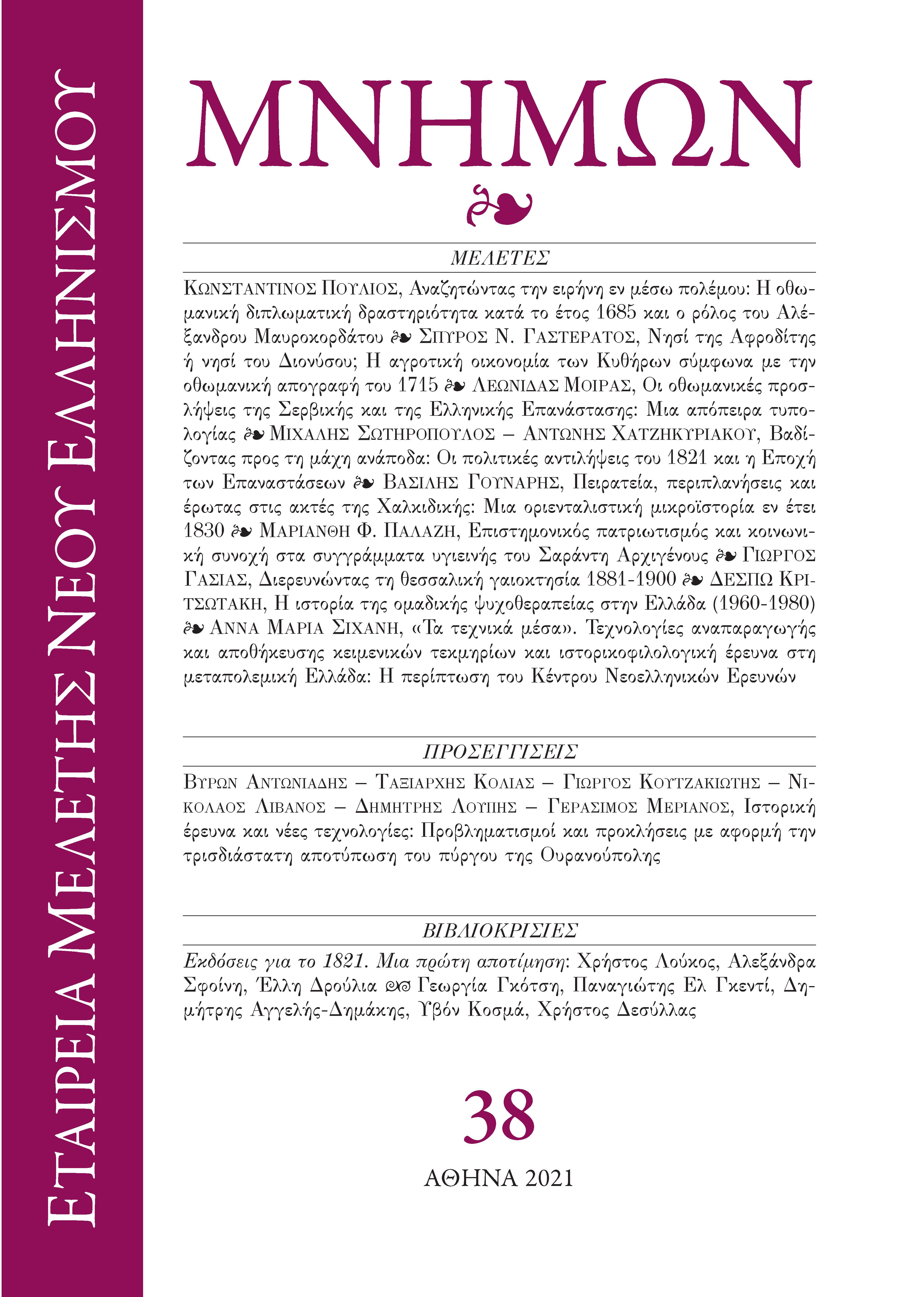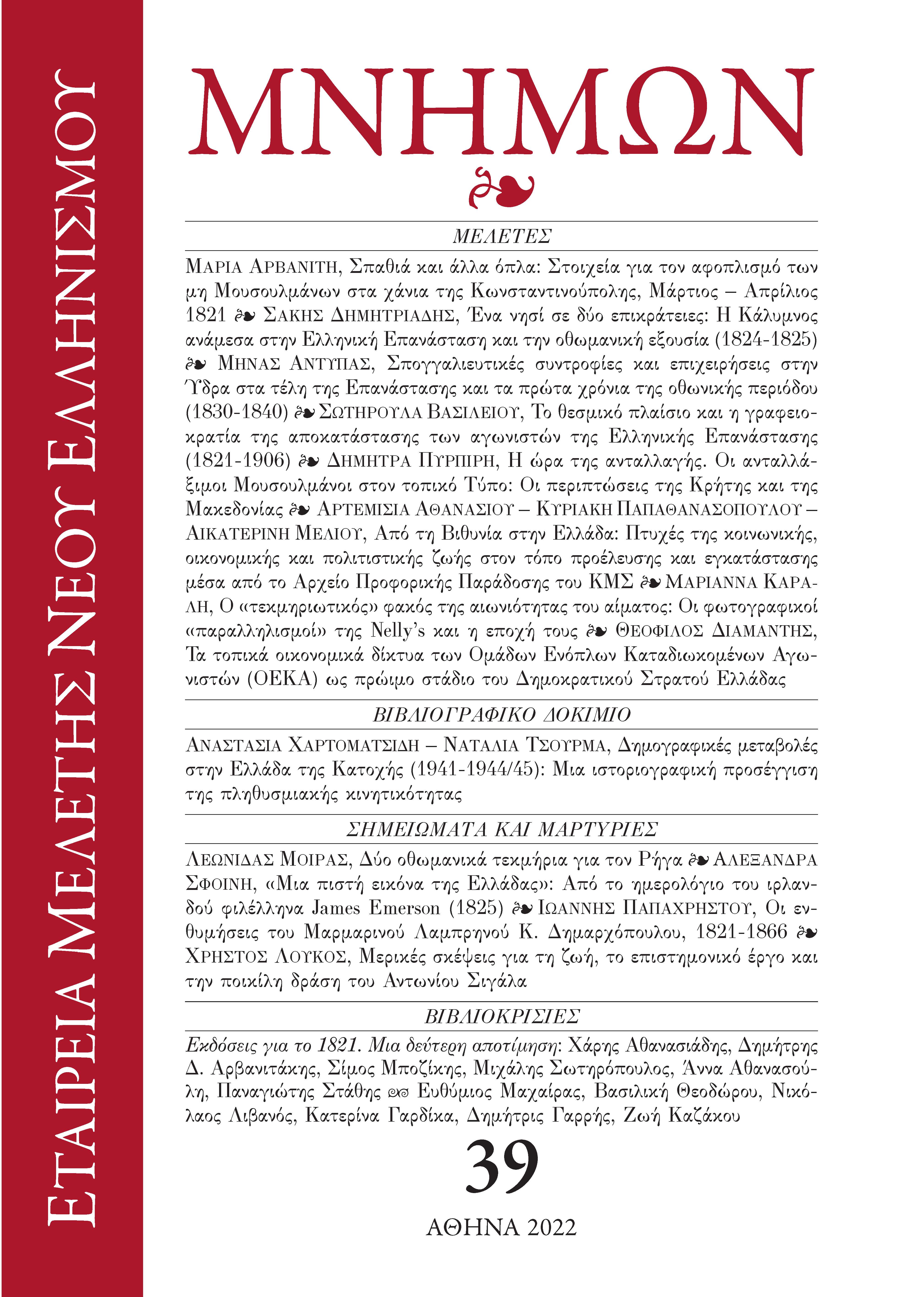THE OTTOMAN PERCEPTIONS OF SERBIAN AND GREEK REVOLUTION A TYPOLOGICAL APPROACH

Abstract
The aim of this study is to investigate how the Ottoman Sultan Mahmud II, the central state elite and the intelligentsia experienced the Serbian and the Greek Revolution. It also examines the Ottoman attempts to quell the rebellions and to reincorporate their Orthodox subjects back to the imperial order. A comparative approach regarding the two revolutionary movements is quite revealing as it demonstrates a set of differences between the two cases. First and foremost, the Serbian rebellion broke out as a spontaneous reaction to the oppressive policies of local Ottoman authorities. On the other hand, the outburst of the Greek Revolution was the result of the adoption of a new collective identity that was triggered by a secularization process under the influence of the modernist ideas of the French Revolution and the Enlightenment. At the same time, however, apart from the differences there are also some striking similarities, or at least, common features that instigated the revolutionary movements, such as the same Ottoman political framework, the impact of the penetration of the modernist ideas and the political claims for autonomy or independence.
Against this background, the above-mentioned framework, provides us the opportunity to attempt a typological approach of the two cases through the examination of the contemporary Ottoman sources and the terminology applied by the Sublime Porte in her effort to contextualize the “sedition” of her subjects. Based on a vast array of primary Ottoman sources during the revolutionary movements we seek to interpret the Ottoman reactions without retrospective and anachronistic explanations.
Article Details
- How to Cite
-
MOIRAS, L. (2024). THE OTTOMAN PERCEPTIONS OF SERBIAN AND GREEK REVOLUTION: A TYPOLOGICAL APPROACH. Mnimon, 38(38), 57–76. https://doi.org/10.12681/mnimon.38204
- Issue
- Vol. 38 (2021): Μνήμων
- Section
- ARTICLES

This work is licensed under a Creative Commons Attribution-NonCommercial-ShareAlike 4.0 International License.
The copyright for articles in this journal is retained by the author(s), with first publication rights granted to the journal. By virtue of their appearance in this open access journal, articles are free to use (with the exception of the non-granted right to make derivative works) with proper attribution for non-commercial uses (licence Creative Commons 4.0). EKT/NHRF retains the worldwide right to reproduce, display, distribute, and use articles published in Mnimon in all formats and media, either separately or as part of collective works for the full term of copyright. This includes but is not limited to the right to publish articles in an issue of the Journal, copy and distribute individual reprints of the articles, authorize reproduction of articles in their entirety in another EKT/NHRF publication, and authorize reproduction and distribution of articles or abstracts thereof by means of computerized retrieval systems.


